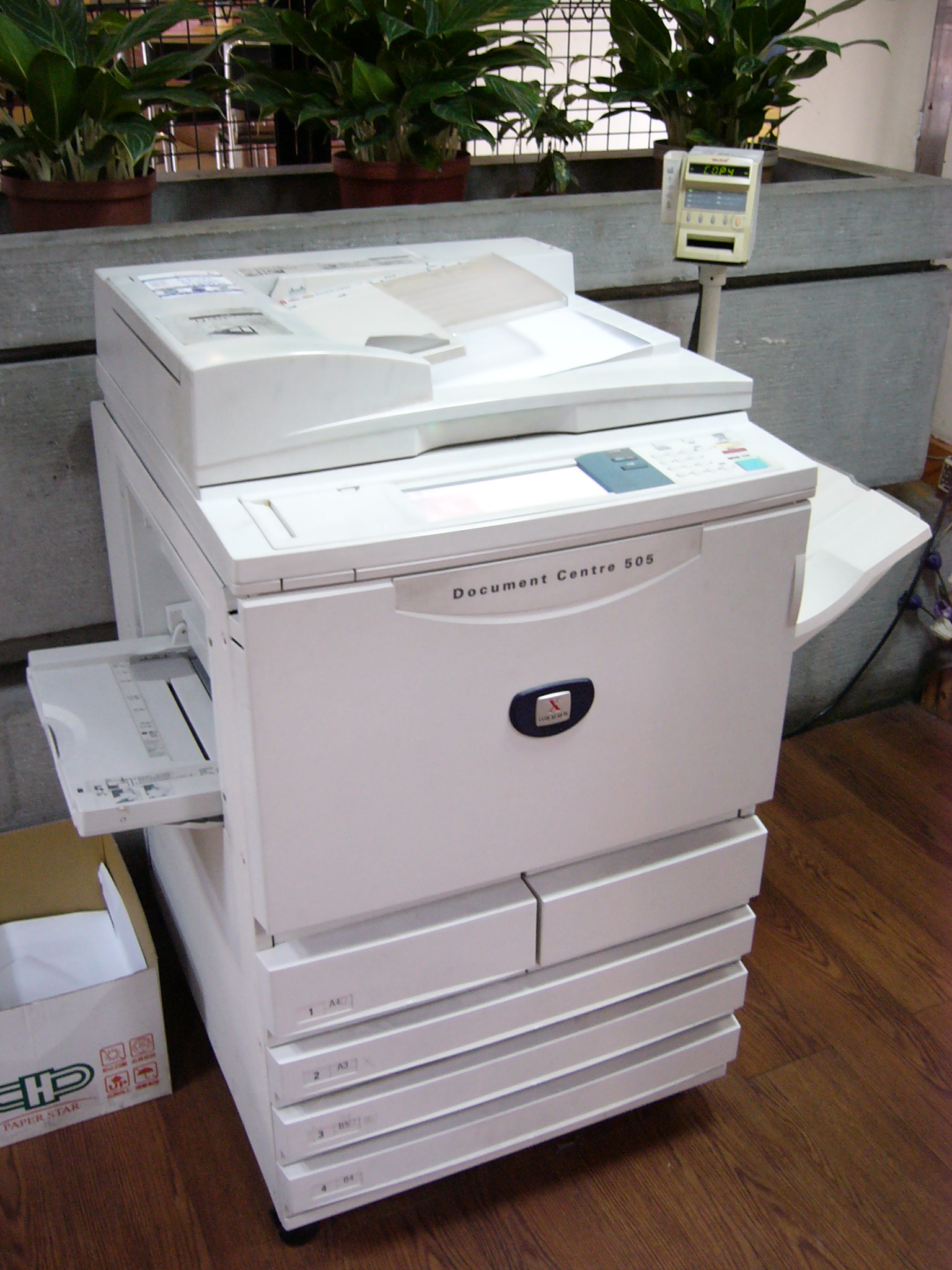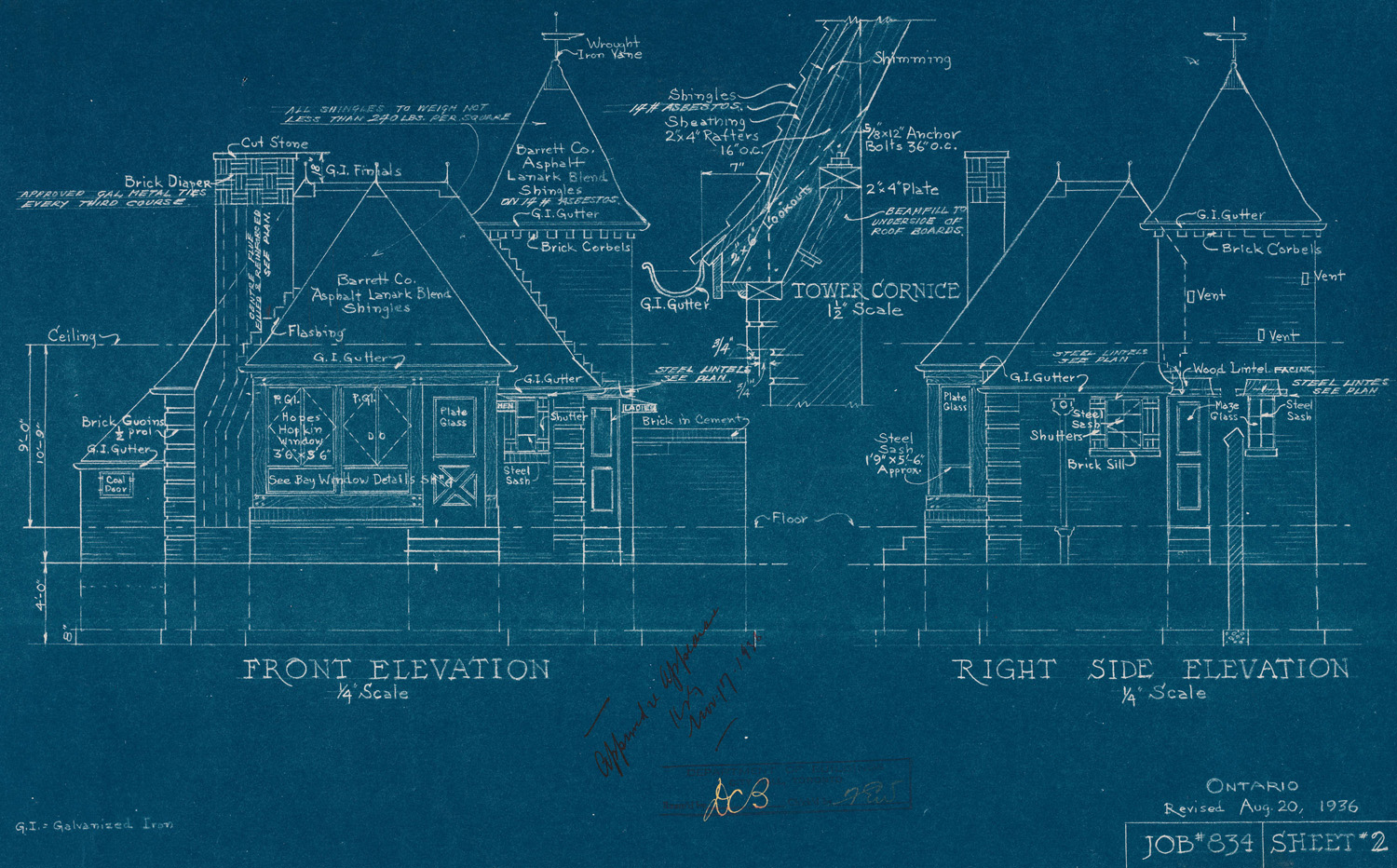|
Verifax Copier
The Kodak verifax is a photo copying approach that uses a wet colloidal diffusion transfer technique patented by Yutzy, H.C. and Yackel, E.C. (1947) The light source is projected to the top crossing the negative being reflected -more or less, according to the color- against the original to be copied exposing the negative. Has a base that contains the recipient with the liquid developer and the exposure timer. Due to its extreme simplicity, the method was commonplace until the late 1960s, when it was surpassed by the popularity of the xerocopies using plain paper. Copies had some chemical smell and lost contrast over time. Diffusion transfer The DT (Diffusion transfer) was widespread in several countries since 1960: * CopyRapid Agfa; * Gevacopy of Gevaert (1950); * Verifax Kodak (1952-1976); * Copyproof (1980?); Other products not specifically intended for copying, but employing a similar PMT technology include: Kodak Ektaflex (1981); Polaroid, sepia (1948), id, White Black (1950 ... [...More Info...] [...Related Items...] OR: [Wikipedia] [Google] [Baidu] |
Photographic Developer
In the processing of photographic films, plates or papers, the photographic developer (or just developer) is one or more chemicals that convert the latent image to a visible image. Developing agents achieve this conversion by reducing the silver halides, which are pale-colored, into silver metal, which is black (when a fine particle).Karlheinz Keller et al. ''Photography'' in ''Ullmann's Encyclopedia of Industrial Chemistry'', 2005, Wiley-VCH, Weinheim. The conversion occurs within the gelatine matrix. The special feature of photography is that the developer acts more quickly on those particles of silver halides that have been exposed to light. Paper left in developer will eventually reduce all the silver halides and turn black. Generally, the longer a developer is allowed to work, the darker the image. Chemical composition of developers The developer typically consists of a mixture of chemical compounds prepared as an aqueous solution. For black-and-white photography, three ... [...More Info...] [...Related Items...] OR: [Wikipedia] [Google] [Baidu] |
Timer
A timer is a specialized type of clock used for measuring specific time intervals. Timers can be categorized into two main types. The word "timer" is usually reserved for devices that counts down from a specified time interval, while devices that do the opposite, measuring elapsed time by counting upwards from zero, are called stopwatches. A simple example of the first type is an hourglass. Working method timers have two main groups: hardware and software timers. Most timers give an indication that the time interval that had been set has expired. Time switches, timing mechanisms that activate a switch, are sometimes also called "timers". Hardware Mechanical Mechanical use clockwork to measure time. Manual timers are typically set by turning a dial to the time interval desired; turning the dial stores energy in a mainspring to run the mechanism. They function similarly to a mechanical alarm clock; the energy in the mainspring causes a balance wheel to rotate back and forth. ... [...More Info...] [...Related Items...] OR: [Wikipedia] [Google] [Baidu] |
Photocopy
A photocopier (also called copier or copy machine, and formerly Xerox machine, the generic trademark) is a machine that makes copies of documents and other visual images onto paper or plastic film quickly and cheaply. Most modern photocopiers use a technology called ''xerography'', a dry process that uses electrostatic charges on a light-sensitive photoreceptor to first attract and then transfer toner particles (a powder) onto paper in the form of an image. The toner is then fused onto the paper using heat, pressure, or a combination of both. Copiers can also use other technologies, such as inkjet, but xerography is standard for office copying. Commercial xerographic office photocopying was introduced by Xerox in 1959, and it gradually replaced copies made by Verifax, Photostat, carbon paper, mimeograph machines, and other duplicating machines. Photocopying is widely used in the business, education, and government sectors. While there have been predictions that photocopiers ... [...More Info...] [...Related Items...] OR: [Wikipedia] [Google] [Baidu] |
Instant Film
Instant film is a type of photographic film that was introduced by Polaroid Corporation to produce a visible image within minutes or seconds of the photograph's exposure. The film contains the chemicals needed for developing and fixing the photograph, and the camera exposes and initiates the developing process after a photo has been taken. In earlier Polaroid instant cameras the film is pulled through rollers, breaking open a pod containing a reagent that is spread between the exposed negative and receiving positive sheet. This film sandwich develops for some time after which the positive sheet is peeled away from the negative to reveal the developed photo. In 1972, Polaroid introduced ''integral film'', which incorporated timing and receiving layers to automatically develop and fix the photo without any intervention from the photographer. Instant film has been available in sizes from (similar to 135 film) up to size, with the most popular film sizes for consumer snapshots be ... [...More Info...] [...Related Items...] OR: [Wikipedia] [Google] [Baidu] |
Translucent
In the field of optics, transparency (also called pellucidity or diaphaneity) is the physical property of allowing light to pass through the material without appreciable scattering of light. On a macroscopic scale (one in which the dimensions are much larger than the wavelengths of the photons in question), the photons can be said to follow Snell's law. Translucency (also called translucence or translucidity) allows light to pass through, but does not necessarily (again, on the macroscopic scale) follow Snell's law; the photons can be scattered at either of the two interfaces, or internally, where there is a change in index of refraction. In other words, a translucent material is made up of components with different indices of refraction. A transparent material is made up of components with a uniform index of refraction. Transparent materials appear clear, with the overall appearance of one color, or any combination leading up to a brilliant spectrum of every color. The opposite ... [...More Info...] [...Related Items...] OR: [Wikipedia] [Google] [Baidu] |
Light
Light or visible light is electromagnetic radiation that can be perceived by the human eye. Visible light is usually defined as having wavelengths in the range of 400–700 nanometres (nm), corresponding to frequencies of 750–420 terahertz, between the infrared (with longer wavelengths) and the ultraviolet (with shorter wavelengths). In physics, the term "light" may refer more broadly to electromagnetic radiation of any wavelength, whether visible or not. In this sense, gamma rays, X-rays, microwaves and radio waves are also light. The primary properties of light are intensity, propagation direction, frequency or wavelength spectrum and polarization. Its speed in a vacuum, 299 792 458 metres a second (m/s), is one of the fundamental constants of nature. Like all types of electromagnetic radiation, visible light propagates by massless elementary particles called photons that represents the quanta of electromagnetic field, and can be analyzed as both waves and par ... [...More Info...] [...Related Items...] OR: [Wikipedia] [Google] [Baidu] |
Photo Mask
A photomask is an opaque plate with holes or transparencies that allow light to shine through in a defined pattern. They are commonly used in photolithography and the production of integrated circuits (ICs or "chips") in particular. Masks are used to produce a pattern on a substrate, normally a thin slice of silicon known as a wafer in the case of chip manufacturing. Several masks are used in turn, each one reproducing a layer of the completed design, and together they are known as a mask set. Previously, photomasks used to be produced manually by using rubylith and mylar. As complexity continued to grow, manual processing of any sort became difficult. This was solved with the introduction of the optical pattern generator which automated the process of producing the initial large-scale pattern, and the step-and-repeat cameras that automated the copying of the pattern into a multiple-IC mask. The intermediate masks are known as reticles, and were initially copied to production mas ... [...More Info...] [...Related Items...] OR: [Wikipedia] [Google] [Baidu] |
Diazo Copier
A heliographic copier or heliographic duplicator is an apparatus used in the world of reprography for making contact prints on paper from original drawings made with that purpose on tracing paper, parchment paper or any other transparent or translucent material using different procedures. In general terms some type of ''heliographic copier'' is used for making: Hectographic prints, Ferrogallic prints, Gel-lithographs or Silver halide prints. All of them, until a certain size, can be achieved using a contact printer with an appropriate lamp (ultraviolet, etc...) but for big engineering and architectural plans, the ''heliographic copiers'' used with the cyanotype and the diazotype technologies, are of the roller type, which makes them completely different from contact printers. In the "argot" of engineers, architects and designers, the resulting plan copies coming from any type of '' heliographic copier'' no matter they were either blue or white, were traditionally called blueprints, ... [...More Info...] [...Related Items...] OR: [Wikipedia] [Google] [Baidu] |
Photolith
A photolith film is a transparent film, made with some sort of transparent plastic (formerly made of acetate). Nowadays, with the use of laser printers and computers, the photolith film can be based on polyester, vegetable paper or laser film paper. It is mainly used in all photolithography processes. A color image, or polychromatic, is divided into four basic colors: cyan, the magenta, the yellow and black (the so-called system CMYK (short name from ''cyan'', '' magenta '', '' yellow '' and '' black ''), generating four photolith film images, a photo filtered with each of the three basic colors plus a B&W film (addition of the three). For black-and-white images, such as text or simple logos, only one photolith film is needed. The ''photolith film'' it is sometimes recorded by an optical laser process on an '' imagesetter'' machine, coming from a digital file, or by a photographic process in a contact copier, if a physical copy of the original already exist. In the old offset ... [...More Info...] [...Related Items...] OR: [Wikipedia] [Google] [Baidu] |
Thermal Copier
A thermal copier or thermocopier (used as a Tattoo transfer copier) is a kind of photocopi er based on the effect of heat. The original sheet feeds in conjunction with the "thermo-sensitive" paper, generating a copy on its specially treated surface. The black parts on the original sheet, once scanned, make the copier activate the heating elements that produce some chemical reactions on the "thermo-sensitive" copy paper that darkens its surface. After the process, a stable black-and-white image is obtained on the cooled film or paper. There are several types of thermal printers, among them and marketed at present time as ''Tattoo transfer copiers'', there are two main types made by different manufactures: Thermo-head type and Heat lamp type Thermo-head type The black parts on the original sheet, once scanned, make the copier activate the heating elements that produce some chemical reactions on the "thermo-sensitive" copy paper that darkens its surface Process: A special "ther ... [...More Info...] [...Related Items...] OR: [Wikipedia] [Google] [Baidu] |
Printing
Printing is a process for mass reproducing text and images using a master form or template. The earliest non-paper products involving printing include cylinder seals and objects such as the Cyrus Cylinder and the Cylinders of Nabonidus. The earliest known form of printing as applied to paper was woodblock printing, which appeared in China before 220 AD for cloth printing. However, it would not be applied to paper until the seventh century.Shelagh Vainker in Anne Farrer (ed), "Caves of the Thousand Buddhas", 1990, British Museum publications, Later developments in printing technology include the movable type invented by Bi Sheng around 1040 AD and the printing press invented by Johannes Gutenberg in the 15th century. The technology of printing played a key role in the development of the Renaissance and the Scientific Revolution and laid the material basis for the modern knowledge-based economy and the spread of learning to the masses. History Woodblock printing Woodblock p ... [...More Info...] [...Related Items...] OR: [Wikipedia] [Google] [Baidu] |




.jpg)


